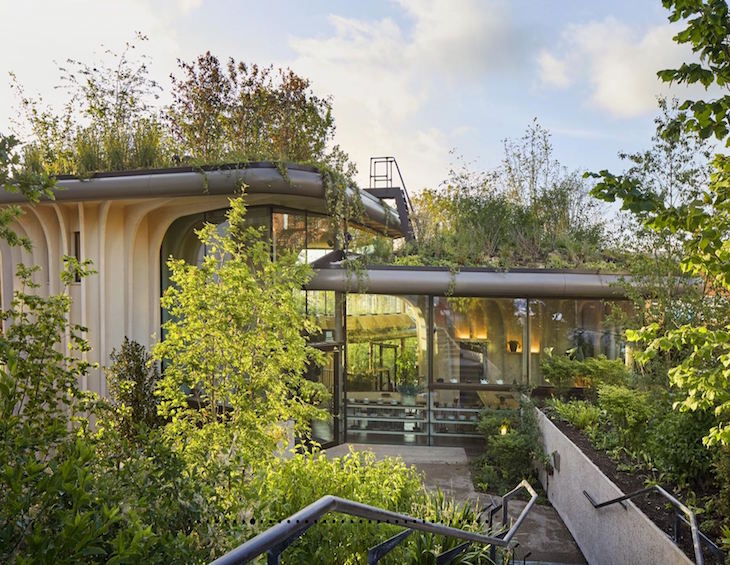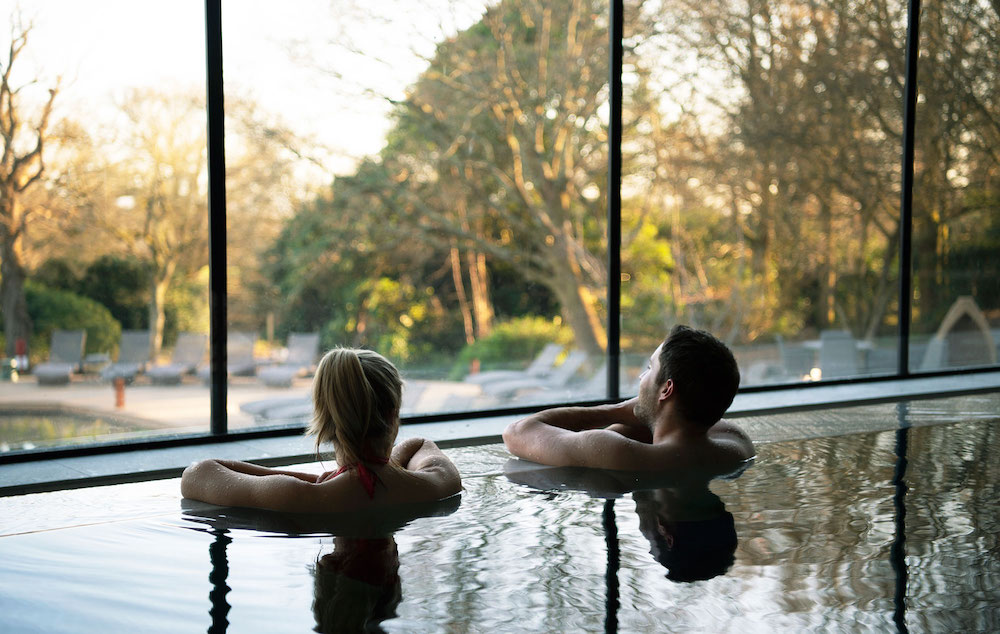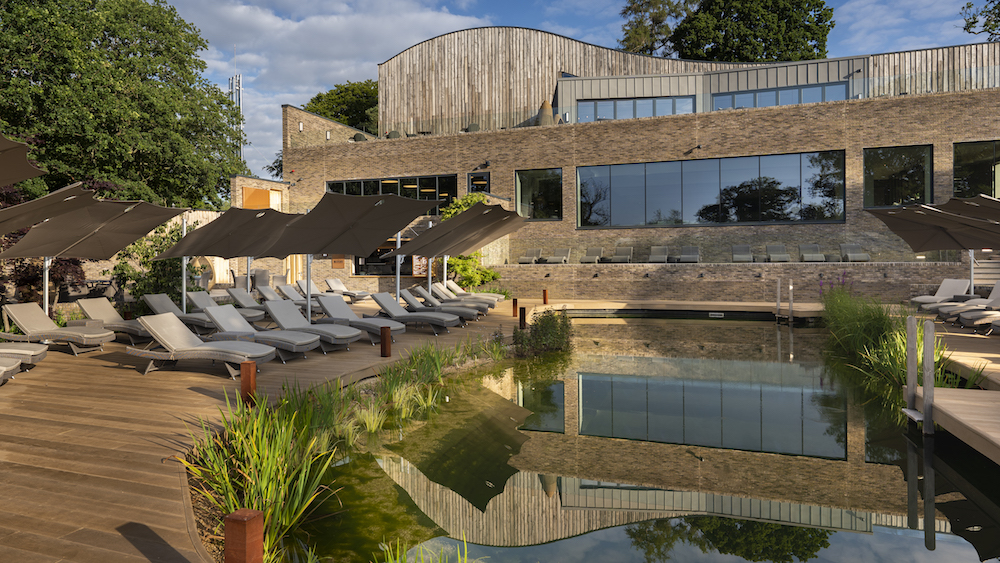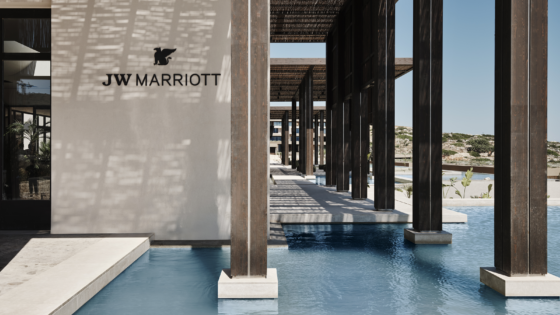As wellness evolves as we enter a new era of hospitality, we invite Beverley Bayes, Creative Director at Sparcstudio, to discuss the growing trend for biophilic design in spa and wellness properties…

It is inevitable that spa and wellness, post-pandemic will become an ever more important and integral part of our lives. We are entering a new era where ‘Health is the New Wealth’ and a healthy lifestyle is recognised as an important part of preventative medicine.
UK hotel spas are set to provide an alternative to holidays abroad as staycations are expected to boom. There has been a 1,900 per cent increase in searches for ‘when do spas open? ‘ post road map announcement, as reported in Googles search trends.

Image credit: Sparcstudio
“Excellent design will be absolutely key in the creation of destination spas that are unique, have heart and soul, capitalise on the best aspects of their location in linking to a beautiful landscape or view,” says Beverley Bayes, Director of Sparcstudio. “Many of the trends in spa design this year and beyond relate to our collective desire to connect with nature.”
Biophilic design: Reconnecting with nature
2020 saw the entire country embrace the great outdoors and spas followed by extending their spa gardens, making use of outside space to help social distancing which created a true connection between the spa and nature.
This ‘biophilic’ approach to design is already evident in our own homes, offices and hotels right now and we expect them to explode in spas in 2021. Spas are realising the full potential of converting outside terraces and underused gardens to useable spa relaxation and wellness spaces.
Nature has always been a key inspiration in the design of the spas that Sparcstudio creates which includes Calcot Spa, Dormy House, The Spa at South Lodge Spa, Sopwell House Spa and the Aqua Sana spas. The Sparcstudio HQ is based by the river at Richmond and we are lucky to have Kew Gardens close to hand for natural ‘inspiration’.

Image credit: The Spa at South Lodge Spa
Location, location, location
When creating a new build spa, careful positioning is key if you want to take full advantage of the vistas, natural light and links to outside spa space, whether this is via gardens or a even a roof terrace. Thankfully spas have largely emerged from being consigned to the hotel basement, reflecting their increasing importance as part of a hotel’s overall wellness offer and the rise in global spa tourism where spas are destinations in their own right.
The Aqua Sana Forest spa concept that we helped develop, transformed the Aqua Sana space – planning model from inward facing experiences, to experiences that reached out into the forest with the inclusion of in-out pools and panoramic saunas surrounded by trees, as can be seen at the new build Center Parcs Longford Forest Aqua Sana spa in Ireland. At the Sherwood Forest Aqua Sana, we created the first sauna on stilts which takes ‘Forest bathing’ to a new level.
Exterior Spa experiences can also include a yoga deck or dedicated area for ‘Forest bathing’, curved seating around a firepit, a circular walk through herb garden, or bathing in a natural pool. Natural swimming pools offer a sense of freedom and escapism whilst tapping into the popularity of ‘wild swimming’. These fresh water, naturally filtered pools and ponds are set to become an essential element for any forward thinking, eco-conscious spa developer.
We are also designing stretch and personal training zones that extend to an outside deck beyond the interior gym spaces.
Not all sites of course are blessed with an inspiring mountain top, edge of the ocean location or a view of pristine countryside or even a glacier, but with good design it’s very possible for a building to ‘transcend’ the location and benefit from a biophilic design approach.
Take the inspiring example of Thomas Heatherwick designed wellness centre ‘Maggie’s in Leeds (a charity that provides support for people affected by cancer). Set in the midst of medical buildings, almost on a traffic island, the studio created a series of beautiful interlocking organic buildings that seem to grow out of the garden and provide a relaxing haven which has central top lit space and roof terraces that features native English species of plants, alongside areas of evergreen to provide warmth in the winter months.
Top lighting
‘Top lighting’ of spaces with the integration of skylights or slots and integration of internal courtyards is a very effective way of providing a connection to nature in spas, framing sky views and allowing light to penetrate into the heart of spa. An example of this can be seen at Spa Vilnius Lithuania, where we formed an organic shaped top lit winter garden in the heart of the treatment space.

Image credit: Champneys Spa Mottram Hall
Interior spaces will also continue to have a strong Biophilic feel and visual link to natural surroundings. I love the Japanese concept of ‘Yukimi-shoji’ meaning ‘Snow viewing Shoji’, which is a type of window made so the bottom half slides upwards, often to reveal a beautiful view. Taking inspiration from this concept, we often frame a view with a single pane of glass in a treatment room or even a heat cabin (such as the Organic Sauna at South Lodge Spa), which features organic forms looking out onto the curving South Downs.
Biophilic form: Curves, waves and organic forms
Curved soft cosseting forms will be a strong theme in spa design offering a comforting embrace to spa users. These will be evident in many elements ranging from curved organic pools (such as the ‘wild swimming’ pool at South Lodge). Bespoke joinery and furniture (for example the statement curved sofas that we created for Champneys Mottram Hall) or the bespoke organic sauna designs and ice feature that we designed as part of the new pool there.
- Image credit: Sparcstudio
- Image credit: Champneys Spa Mottram Hall
Biophilic design for the senses
Natural light, planting, fire and water are key elements to incorporate into a biophilic wellness interior. But surprisingly ‘Aroma’ whilst often being a key part of the spa treatment experience itself, can be overlooked in the physical design of the spaces.
As spa designers but we like to be mindful of Aroma as an integral part of the sensual experience, imbedded in the spa materials and finishes and experiences. Thermal and heat experiences offer an opportunity to create little ‘micro climates of aroma’. Cedar is one of my favourite timbers within saunas for its soothing slightly exotic smell. We have also designed many plant based aroma rooms including the ‘lavender aroma room’ heat cabin that we designed as part of the heat experiences at Dormy House Spa utilising local lavender from a nearby farm.
At Sopwell Spa, Cottonmill Club, we created a ‘Rose Relaxation room’ inspired by Moroccan Riads whose central courtyards provide serene sheltered relaxation spaces infused with a Moroccan rose aroma, and rose tinted glass panels create private relaxation niches.
As part of our design of Third Space fitness club at Tower Bridge we created one of London’s first dedicated hot yoga studios. We lined the walls with fragrant Juniper logs and fitted with state-of-the-art anti-bacterial technology, enabling members to enter deep stretches and poses, and detoxify through perspiration, in a hot, cleansing biophilic environment.
Since you’re here, why not read out Guide To Hotel Design article on spa design in the new era of wellness?
Sparcstudio is one of the brands that has taken advantage of our Industry Support Package. To keep up to date with supplier news, click here.
Image caption/credit: Maggies by Thomas Heatherwick






